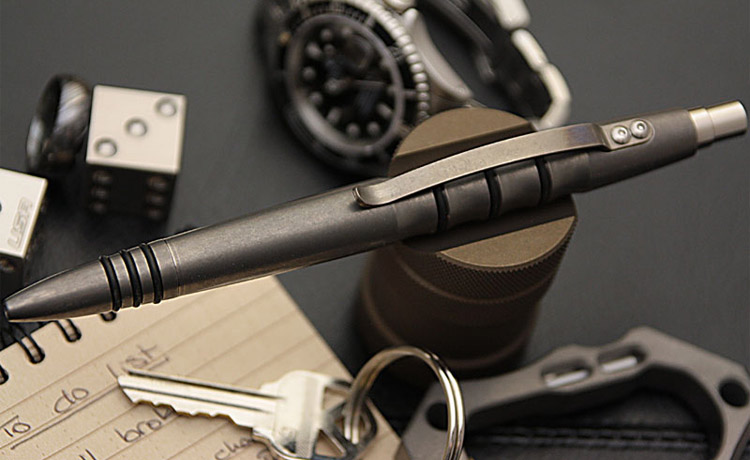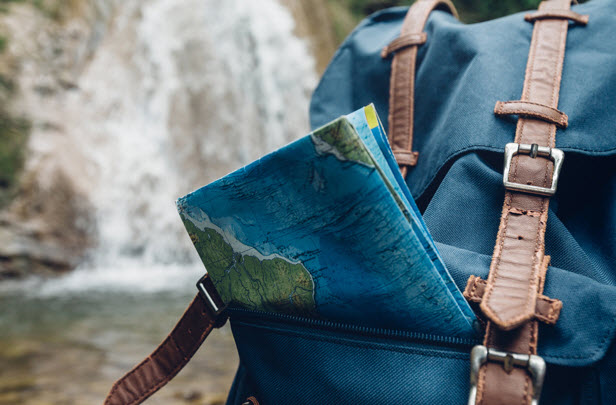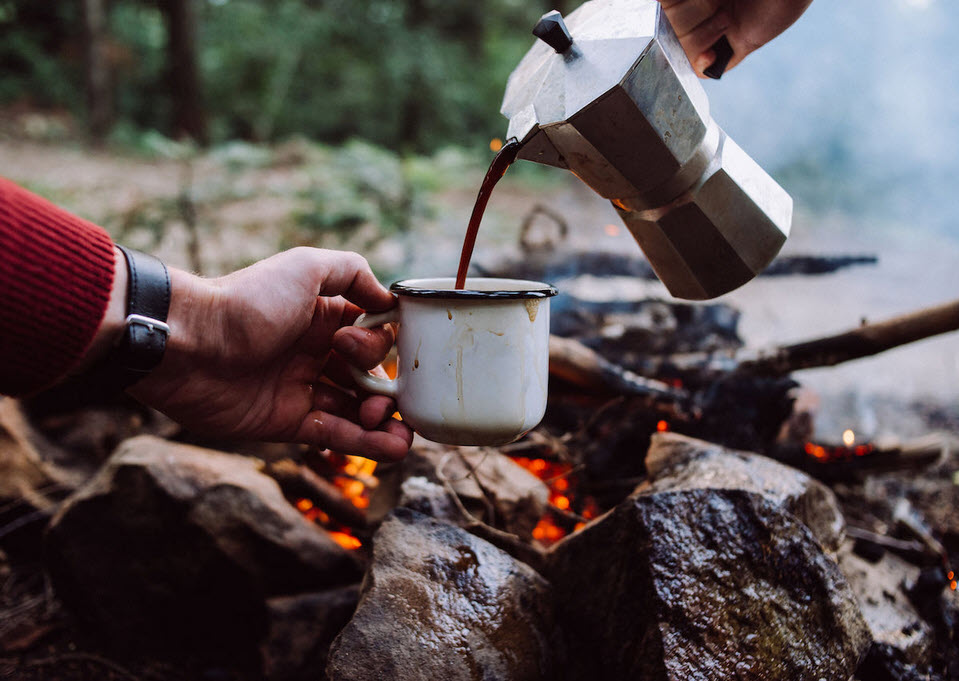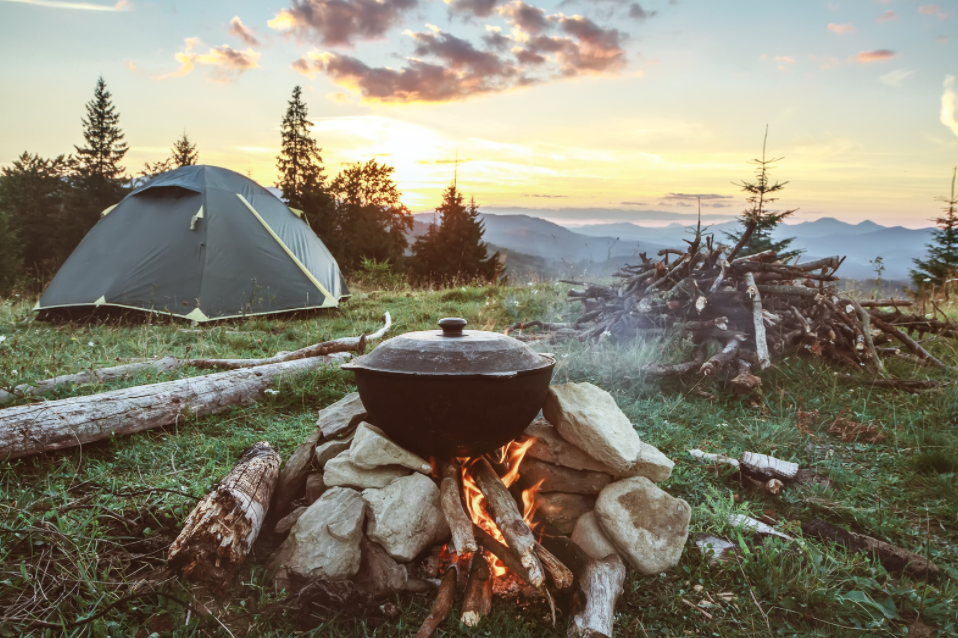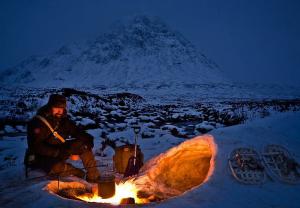
Camping in the winter might seem like an extreme sport to some people and some still firmly believe that it’s one of the 1000 ways to die, but it can be pretty cool, literally. As long as you have the right gear, and you do your homework before heading out into the frosty outdoors, you can have a successful camping trip in winter.
Camping in winter has its perks- the view is pristine, there are no bugs, the wildlife is in hibernation, and you don’t have to worry about annoying campers. But before you embark on this brave journey, you need to know just how to camp in the winter, no? Don’t worry, we’ve got you.
In this article, we’ll give you useful tips on how to keep the camping fire burning during winter (and we mean that both literally and figuratively). Winter will have nothing on you- and not even the wettest of dews will be able to dampen your spirit, by the time you read through.
So, let’s get into the winter camping essentials, shall we?
What you need for winter camping
Winter camping can be chill as ice, but if you are badly prepared, it could end up being the worst trip of your life. We don’t want that. So, let’s cover some basics that you would need to have a good winter camping experience.
- 1. Warm Clothes: This one seems like a no-brainer, right? But you should not be staying warm with just anything that can be a layer. Cotton is an especially bad fabric for winter because it is no good at wicking moisture. In fact, wet cotton will cool you faster than standing outside naked in the snow.
For camping in winter, look for fabrics like polyester or wool that wick perspiration away from your skin and dry quickly. This will be your base layer. You’ll also need an insulating layer that you can take on and off as you warm up or cool down throughout the day. Most winter campers like to wear a puffy down or synthetic insulated jacket. If fleece is more your style, make sure you’re going for heavyweight fleece.
Your outermost layer should protect you from snow, sleet, rain and wind, so choose a shell with weather-proof lining like GoreTex. Asides water-resistant top layers, it is important to have a fully waterproof jacket and pants because if moisture penetrates your inner layers, you can get seriously chilled. Keep in mind, however, that these garments also need to be breathable so that perspiration wicked by your inner layers can escape.
Also, it is just as important to stay dry as it is to stay warm. Water conducts heat better than air does, so wet clothes will swiftly lower your body temperature. All this is the long way of saying that working up a sweat might be dangerous in the long run.
So, take your activities slow and peel off layers as you get warmer to limit perspiration.

- Good gear: The required gear for winter camping is the same as the one you’d pack for backpacking, but with extra focus on warmth and toughness- it will be a cold world out there.
- Tent: A regular 3-season tent will work just fine, but if the weather forecast is predicting snow storms or high winds, it would be better to go with 4-season winter camping tents.
4-season tents have sturdier poles and heavier fabrics than 3-season tents, so they can withstand powerful gusts of wind and heavy loads of snow. They also have less mesh and the rain-flys extend close to the ground, keeping swirling snow from getting inside.
It’s also recommended to use cold weather tents with extra space- for example, a 3-person tent for two people- because you’d need to stow away your gear from the elements.
- Sleeping bags: To ensure maximum comforts on cold nights, get a sleeping bag that is rated to handle at least 10° lower than the coldest temperature you’re expecting. Winter bags are distinguished by the draft tubes behind their zippers, draft collars above the shoulders and hoods that help keep heat in the bag.
Cold-weather sleeping bags are infused with generous amounts of goose down or synthetic insulation. Down is a popular choice because of its superior warmth-to-weight ratio. Just be sure to keep a down bag dry- when wet, down loses much of its insulating ability.
If you’re not sure whether your sleeping bag is warm enough, you can add a sleeping bag liner. They help add extra warmth while keeping your bag cleaner and extending the life span of the bag. The extra layer can add about 5 – 25°F of extra warmth.
iii. Backpack: You’d definitely need more materials for winter camping than you would for summertime, so you’d need a large backpack. Pack as lightly as you can, but always make sure that you’re prepared for the most extreme winter conditions.
It is advised to use a backpack that has an insulated lining, so that your gadgets can stay warm. Cold weather is the worst for gadgets that have batteries- but a backpack that keeps heat will ward off the chills and keep your gadgets warm. You could also cozy up to such gadgets- share some body heat; they will definitely return the favor.
- Camping kitchen: Cold nights can only be bearable with hot food, so you need to equip your gear with a mobile kitchen. These would include a liquid fuel or canister stove for melting snow (yes, that’s drinking water) or for making yourself a cup of hot coffee, cowboy style.
Keep your meals simple so you don’t have to be stuck cleaning lots of dishes in the cold. Consider calorie-dense foods that don’t take much time to cook.
- Health and Safety Provisions: A lot of things can go wrong during a winter camping trip. To prevent any health or safety hazards, keep the following safety point in mind:
- Wind protection: Setting up camp near a natural wind block, like a group of trees or a hill, can make your experience more comfortable.
- Avoid camping on vegetation: In patchy snow conditions, it is best to set up camp on the snow or an established campsite of bare ground. To prevent the risk of avalanche, make sure you’re not on or below a slope that could slide.
If you will be travelling in avalanche terrain,you need to carry these carry three items and know how to use them:
Avalanche transceiver: Avalanche transceivers emit a signal that other transceivers can pick up. If an avalanche happens and someone is buried in an avalanche, rescuers can use their transceivers to search for the victim.
Probe: A probe is a collapsible pole with depth markings up to 10 feet long. Sections can be quickly assembled after an avalanche to dig into the snow and help find victims.
Snow shovel: A shovel is essential for digging out avalanche victims. It’s can also come in handy when you need to level a tent site, dig a snow shelter or get fresh snow to melt for drinking water.
iv.Landmarks: Also, keep an eye out for landmarks to help you find the camp in the dark or in a snowstorm.
Don’t forget to pack first-aid items that will be useful if you or any of the campers get injured or wounded on the trail.

